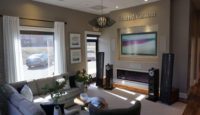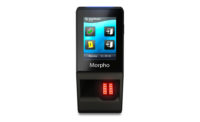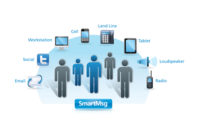Given the prevalence of traffic cameras and toll plaza cameras, license plate recognition (LPR) may seem pretty straightforward: take a picture of a car, analyze it with software to determine the plate number, then compare that number against a database or store it for later forensic use. However, as is the case with any technology, the devil’s in the details. And in the LPR world, if any one of those details isn’t just right, the results can be downright useless.
While many people consider LPR to be a single technology in and of itself, it’s actually a number of different technologies — most of which can be used for many other applications — that have been combined to create a solution for a specific application.
“LPR is an analytic and as such is often a part or subset of a larger surveillance and/or access control solution,” says Daniel McKimm, CEO of systems integration firm ProTech Security, based in North Canton, Ohio.
On one end of the LPR system, you have license plate capture (LPC). On the other end is recognition. The two are definitely linked, but should never be considered one and the same, says Willem Ryan of Fairport, N.Y.-based Bosch Security.
LPC consists of a camera that should be able to capture the image of a license plate in various conditions — day, night, high speed and more. LPC usually uses black-and-white cameras, but can also work with color or a combination of the two (such as complementing a black-and-white camera for capture with a color camera to provide an overview look).
Images are fed into a video management system for analysis and recognition. These analytics can be housed within the camera or on a DVR or NVR, PC or capture card, depending on the application. Complicated software algorithms then interpret the plate’s alphanumeric characters and convert them to text, which can be stored for later use, compared against a database or sent to a different location for another use altogether.
The “magic” behind LPR is optical character recognition (OCR), the same technology that converts a paper document into a digital scan that you can edit in your home or office. LPR is simply leveraging that OCR and applying it to that task.
What’s the Situation?
Even the best LPR analytics rely on good images, so if the captured image is poor, recognition rate will be unacceptably low.
“The litmus test is, ‘Can you see it?’ If you can’t read the plate, the algorithm can’t either,” says Justin Schorn, vice president of product management for Waterloo, Ontario-based Aimetis. “Whether it’s people counting or tripwire or LPR, if you can’t read the plate easily, the algorithm is looking at the same image you are. There isn’t a CSI approach where we can take the image and add pixels and clean it up. There is no cleaning up the image, and based on that image, we’re trying to read what’s in there.”
Knowing what recognition rate an end user will require will go a long way towards avoiding problems with the system and its components down the road, says Schorn.
“For one application, 95 percent accuracy might be good enough, and that’s fine. In other types of applications maybe that’s not fine,” Schorn explains. Normally where most mistakes are made is in the upfront planning and expectation-setting phase.
Successfully designing a system that will provide an acceptable recognition rate begins and ends with understanding the situation where LPC will be taking place, says Jason Canada, director of product management, 3VR, based in San Francisco.
“There are a few things to start with. Understanding speed, which is the No. 1 factor. The second factor is lighting, which is critical, and certainly camera placement. It has to be in a position where you’re going to get a straight-on view of the plate,” he says.
Image-quality problems such as motion blur are most often caused by inadequate lighting, using the wrong camera, and viewing angles that fall outside of the recommended scope. “It’s crucial to become acquainted with the various lighting issues and angles necessary to avoid misreading plates,” McKimm says. “You can’t take a standard or even high-resolution camera with embedded LED and expect an off-the-shelf or one-size-fits-all solution.”
Whether a customer provides the wrong information or the integrator doesn’t fully understand the environment well enough, determining the particulars of a situation can be extremely challenging, Schorn believes. “Maybe they thought there was going to be one type of traffic volume, and it was a lot more. Maybe they thought the kind of lighting would be this, but they actually have a lot less,” he says. “There are a lot of assumptions being made, and those assumptions are not valid.”
The more advanced the implementation, the more important it is to have proper training to ramp up knowledge and ensure end user satisfaction, says Eric Fullerton, chief sales and marketing officer, Milestone Systems, based in Copenhagen, Denmark. “The more you know, the better you can design the system, choose the right components and configure the system for optimal operation and results,” he says.
That’s why it’s crucial to understand the limitations of the technology and to set realistic expectations, Fullerton says. “Don’t overpromise what can be delivered realistically. For example, don’t let the customer think they can look at the mirror image of something in a puddle and read the license plate,” he says. “The right pixels and [frames per second] have to be designed properly. Camera location and angle, lighting at different times of the day, etc. are part of the best practices.”
Camera Selection
Too often, people think license plate capture is as easy as putting a camera out there, adding infrared lighting and it’s automatically going to read license plates 24 hours a day, seven days a week, says Eddie Reynolds, president of Sugar Land, Texas-based Illuminar Inc. “They think they’re going to get the plate and the scene and the face and the type of car, but it’s not just as simple as that,” she says.
That’s why in LPR applications, the best camera choice is a specialized camera that’s been designed specifically for LPR. “The best scenario is to get a camera that’s specifically for license plate capture, whether it be an analog LPC camera or a megapixel LPC camera,” Reynolds says.
LPC-specific cameras are preconfigured with the correct settings and focus on a very narrow field, namely a license plate. They capture a high-resolution image, but provide no other details from the scene. They’re also very expensive, which is one reason network cameras are being used more and more in LPR applications.
“Network cameras’ performance is close enough that some people might not need to pull the trigger on a dedicated, expensive LPR camera,” Schorn thinks. “They’re trying to kill two birds with one stone; the network camera provides a nice field-of-view, and the resolution is high enough that there are enough pixels on the license plate for LPR.”
To ensure optimum performance, LPR software typically requires 40 to 90 pixels per horizontal foot of coverage. At 45 pixels per foot, a 0.3 megapixel VGA camera can provide only 14 feet of coverage. A 3-megapixel camera, however, will provide 42 feet of coverage while maintaining the necessary resolution.
While a high-resolution network camera might suffice, it won’t provide the same recognition rate of a dedicated LPC camera. But 100 percent recognition isn’t necessary in every application, Schorn says. “We have some customers who are doing this and they’re willing to accept, say, a 90 percent accuracy rate,” he explains.
Let There Be Light
In addition to the right camera, lighting is crucial for license plate capture and recognition. Whether that illumination comes in the form of IR, LED, white light or an incandescent bulb with a flash depends on the situation. But for LPC and LPR to be successful, there has to be light. Without the proper lighting, you have no video and, by extension, no recognition, Reynolds says.
“Think about it: If you have 20-20 vision and you’re in a dark room, can you still see things clearly?” she asks. “It doesn’t matter how great the lux level is. If it’s in a dark situation where there’s no light, that camera isn’t going to see.”
When using IR illumination, it’s important to ensure that your camera has an IR-corrected lens. If you’re using a megapixel camera, that should be a megapixel IR-corrected lens. You also need some kind of illuminator and a narrow field (10 to 30 degrees maximum, according to Reynolds), and the illuminator has to be rated to illuminate two to three times the distance of what’s needed from the camera to the license plate.
“It has to be very specific. All that is set up so you can read license plates 24 hours a day, seven days a week,” Reynolds says.
In the case of IR, plates have to be reflective because the IR illuminator picks up the reflection off the license plate. If it’s not reflective, it won’t work. And if the characters on the plate are red or light blue, IR has a hard time reading them. In that case, some people opt for white light illumination, which has its own drawbacks. “With that you have to be careful because if you’re trying to read a front plate, it’s going to blind the person when they’re driving,” Reynolds describes.
To underscore the importance of lighting, Schorn says that is the most common cause of image quality issues. In some situations, for whatever reason, end users may not want to use lighting at night and aren’t interested in using IR lighting. “There are a lot of cases where the customer doesn’t want a lot of light at night. Maybe it looks bad, maybe the neighbors have complained because of all this light, so they try to get around that,” he says. “But the downside is that it’s very difficult to capture plates. You have motion blur scenarios where they didn’t have IR. Most of the problems are happening at night rather than during the day.”
The Challenges
To get into or be successful at designing and installing LPR systems, the best advice may come from the old Apple slogan: Think different.
“You have to realize that capturing a plate is different from everything else that dealers are going to be dealing with,” Bosch Security’s Ryan says. “It’s a one-foot object moving through space and time very quickly. That’s a difficult thing to capture on a consistent basis in an effective way.”
Variety may be the spice of life, but when it comes to LPR, variety is one of the two biggest issues, the other being reflectivity.
“Understand that this isn’t as simple as ‘CSI’ would have us believe,” McKimm says. “All license plates have different characteristics that make up the plate, whether it be font size, colors, graphics or reflective material. It all varies from state to state. That’s a lot of information to process or ignore for any LPR analytic.
“Our experience was that each location requires its own design and engineering analysis. That includes location lighting conditions, vehicles involved, license plate styles, VMS integrator you’ll partner with and more,” he describes.
Which leads to another piece of advice: Ask for help.
“The reality is that most system integrators might do one or two LPR systems a year, if that. So they don’t have a lot of know-how they’ve accumulated,” Schorn says. “Vendors have that expertise, so systems integrators should take advantage of their technology partner for a lot of the pre-sale designing.”
| Beyond Tolls & Traffic |
|
According to Bosch Security’s Willem Ryan, LPR has become more and more mainstream over the past five years. Intelligent traffic systems (ITS) such as toll plazas may seem to be the most obvious use, but they aren’t necessarily a great fit for everyone. Fortunately, there are several more potential applications for LPR outside of that niche. “There are really two markets: the traditional security market and the intelligent transportation system market,” Ryan describes. “Most dealers and integrators won’t get involved in ITS because that’s a very focused, small group of integrators who deal with that, and there are a different set of parameters that you’re working with.” On the security side, LPR is a good choice for access control. In fact, says Justin Schorn of Aimetis, automated access control applications, such as in a fixed parking situation, are driving much of the growth in LPR. “From an LPR point of view, that’s the easiest to deploy. You need the least specialized technology for that application because the environment is highly controlled,” he says. Dealers and integrators also can make a business case for LPR in these situations. For example, after parking their car for two weeks, someone may tell the attendant, “I lost my ticket.” As a result, they’ll just get away with the one-day maximum charge. “LPR almost becomes operational at that point,” Schorn says. “The ROI can be tied to revenue much easier than if it were just a pure-play security or border-crossing type of application.” Another ROI case dealers and integrators can make is the ability to deploy LPR as an additional piece of an existing video or access control system. “You don’t need a whole other LPR system. You’re just adding the LPR analytics on top of existing technology,” says 3VR’s Jason Canada. The most creative application Ryan has seen was LPR used for marketing. Specifically, license plate information was used to determine airport usage data. This information was sold, for example, to airlines to help them decide whether to build or lease additional terminal space. Even the National Park Service has found value in LPR. “In Krueger National Park, they use LPR technology to track speeders and poachers, helping to manage the safety of the animals,” says Lars Gulbrandsson, head of product management at Milestone Systems. Because LPR is based on optical character recognition, it has many possible uses beyond simply reading license plates. As Aimetis experimented with reading other text on signs and vehicles, such as FedEx trucks, in its parking lot, Schorn says a potential value-add for LPR emerged. “It’s more than a pure-play LPR; we can use OCR [for] text strings other than plates,” he says. “It wasn’t planned, but it was sort of a side effect that as we started reading other text strings, people liked it.” LPR technology is commonly used in ports, to read ISO compliant and other text strings from the sides of shipping containers and trucks. Other potential applications include schools, hospitals and many more. “Basically, LPR works anywhere someone is parking or coming in and out of a facility — corporate sites, campuses, industrial facilities, member-based facilities, gated communities,” Ryan says. “You’re really only limited by your imagination.” |










